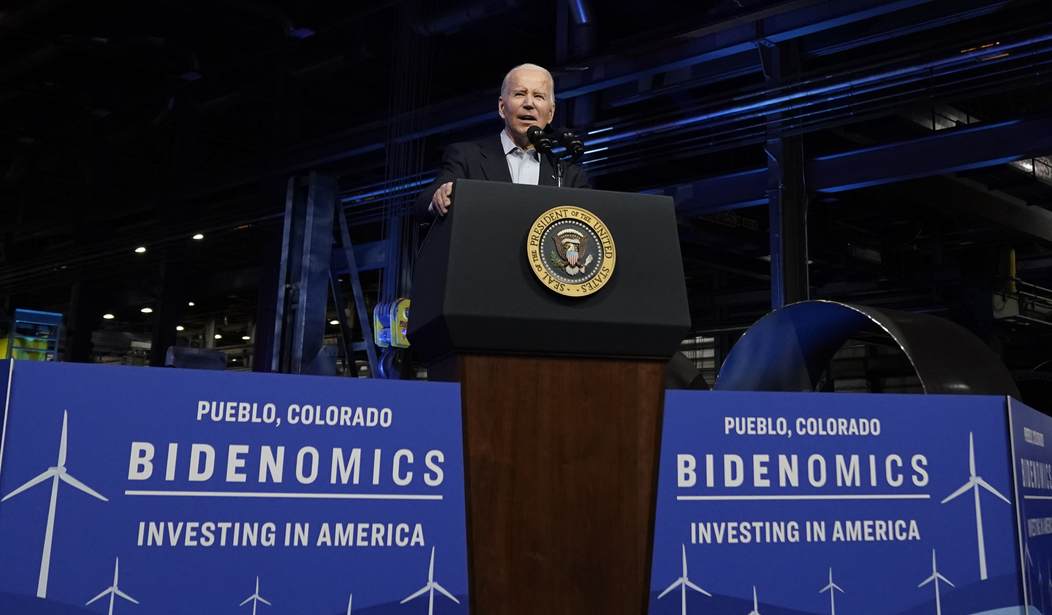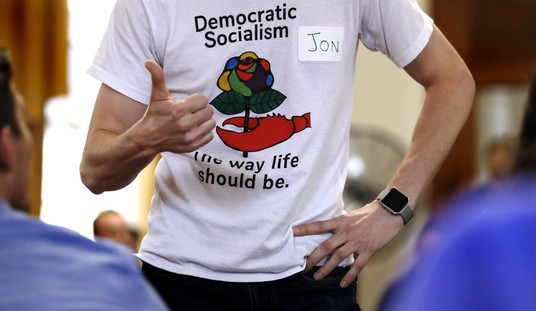Americans live in an ocean of statist propaganda—of messages that, directly or indirectly, promote more power for government, especially the federal government. The propaganda takes the form of communications on health, the environment (including “sustainability”), government programs, and consumer issues. Usually, we don’t notice this propaganda any more than a fish notices the water in which it swims. But if you look, you encounter it everywhere: on billboards, in our newspapers, in radio “public service announcements,” and on the internet. I’ve even seen environmentalist propaganda on public buses and garbage trucks.
To a certain extent, we can document the phenomenon statistically. In a recent Townhall column, I mentioned the results of a Google Ngram I performed in 2021. Google Ngram uses the texts of published books to report the frequency of words and phrases over time. I searched it to find out how often 20th and 21st century American books used derogatory terms toward conservatives and how often they used comparable insults toward liberals.
The results of the Ngram showed that conservative people and positions were branded as “right-wing extremist” far more often than liberal people and positions were characterized as “left-wing extremist.” There were similar imbalances in the use of “far right” versus “far left,” and “ultra conservative” versus “ultra liberal.” These results are interesting, but they are not complete. Relatively few people write books, so the unbalanced numbers may reflect the prejudices of only a small part of the population. Moreover, many people do not read books, so they are not exposed to this bias, at least not directly.
However, newspapers are more of a mass medium than books, so they should give us a fuller picture. Fortunately, Newspapers.com (available by subscription only) operates a database containing the full text of about 2900 American newspapers published over several centuries. The database includes newspapers of every description, not only powerful establishment outlets such as the New York Times and the Washington Post.
Recommended
In this country, the competition between the Republican and Democratic Parties has been fairly even over time. For example, of the 16 presidential elections since 1961, the Republicans have won nine and the Democrats seven, although the Democrats have done somewhat better in Congress. So if there were no overarching propaganda apparatus, you would expect to see about the same number of insults hurled at conservatives as at liberals. Thus, American newspapers should contain roughly equal use of terms of opprobrium like “ultra conservative” and “ultra liberal.”
I conducted Newspapers.com searches of entire newspapers—new stories, editorials, op-eds, letters to the editor, and other content. I explored the time period 1961-2025. I began in 1961 partly for personal reasons: It is about as far back as I can remember political affairs. But, I also chose 1961 because there was a lot of talk about extremism—imaginary and real—during the 1960s.
For that period, I looked for four sets of matching political invectives: (1) “far right” and “far left,” (2) “extreme right” and “extreme left,” (3) “right wing extremist” and “left wing extremist,” and (4) “ultra conservative” and “ultra liberal.” I recorded the number of times each invective appeared. Here is what I found:
1961-2025
Far Right: 1,452,428
Far Left: 999,315
Extreme Right: 339,037
Extreme Left: 190,316
Right Wing Extremist: 140,842
Left-wing Extremist: 28,608
Ultra-conservative:183,929
Ultra-liberal: 103,965
As you can see, newspaper writers categorized conservative persons and positions as “extremist” or as “far right,” or as “ultra conservative” far more than they categorized liberal counterparts in comparable ways. Specifically, the appearances of “far right” amounted to 145% percent of the appearances of “far left.” Put another way, it was 45% more likely for a person or position to be branded “far right” than “far left.”
The phrases “far right” and “far left” often appear in non-political contexts. (Example: “When driving toward the intersection, stay in the far right lane.”) However, the other three phrases are more purely political, and the disparity is even worse. It was 78 percent more likely for a conservative person or position to be branded “extreme right” than for a liberal person or position to be branded “extreme left.” It was 77 percent more likely for conservative persons and positions to be labeled “ultra” than for liberal counterparts. (A link to my spreadsheet is here; scroll down for the right-hand side.)
Particularly stunning was the imbalance between “right-wing extremist” and “left-wing extremist.” During this time period, if you were a conservative, it was five times more likely a newspaper writer would call you an “extremist” than if you were a liberal!
I also broke down the 1961-2025 timespan into shorter periods to see if the situation was becoming better, becoming worse, or staying about the same.
The answer is that it became worse gradually—until the period 2021-25, when it became worse exponentially.
Here are some of the results:
- The ratio between the “far right” and “far left” remained about the same (between 1.2:1 to around 1.5:1) until the 2021-25 period, when it popped up to 3.62:1. In other words, during the last five years, a conservative was nearly four times more likely to be characterized as “far right” than a liberal was to be called “far left.”
- The imbalance in the use of the phrases “extreme right” and “extreme left” steadily grew—and then exploded during the last five years.
- During the 1961-1980 period, the term “right-wing extremist” appeared about two-and-a-half times more often than the phrase “left-wing extremist.” But over the 2021-2025 timespan, the former term appeared seventeen times more often!
- The imbalance between “ultra conservative” and “ultra liberal” grew steadily until 2021-2025, when it exploded. In the latter period, a newspaper writer was over six times more likely to call a conservative person or position “ultra” than to affix the same label to a liberal person or position.
These numbers reflect decades of ubiquitous leftist propaganda. It is amazing that conservatives continue to comprise nearly a plurality of the American population. One possible reason is that personal experience is a better teacher than propaganda.
An unanswered question is why newspaper writers’ leftward bias—already inexcusable—became dramatically worse during the 2021-2025 period. My hypothesis is that the January 6 congressional show trial and the Biden administration’s anti-free speech censorship efforts were partly responsible.
But more research would be necessary to verify or falsify that hypothesis.
Robert G. Natelson, a former constitutional law professor who is senior fellow in constitutional jurisprudence at the Independence Institute in Denver, authored “ The Original Constitution ” (4th ed., 2025). He is a contributor to the Heritage Foundation’s “Heritage Guide to the Constitution .”

























Join the conversation as a VIP Member